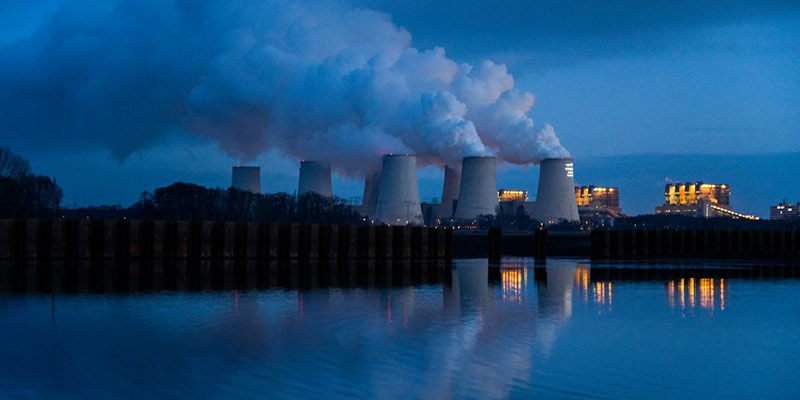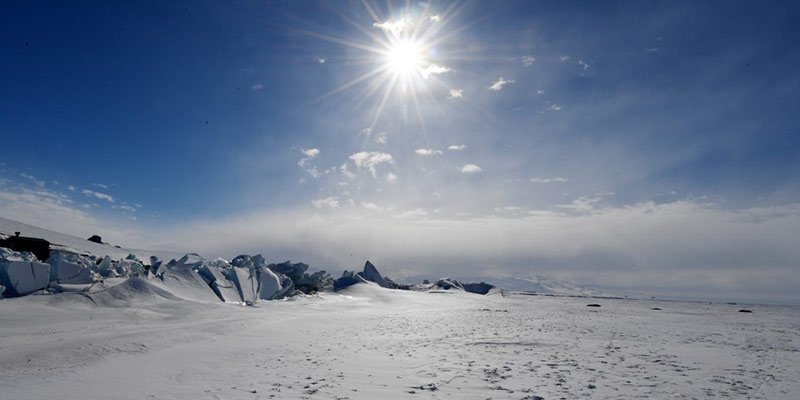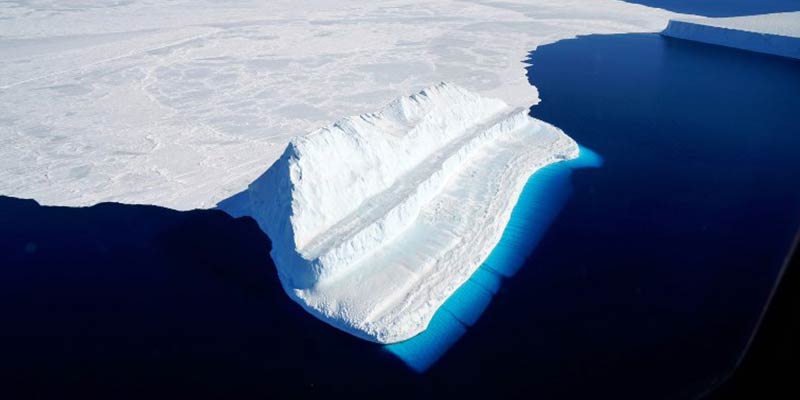- World
- Aug 11
‘Code red for humanity’: An analysis on IPCC report
• Human-induced climate change is already affecting many weather and climate extremes in every region across the globe.
• Scientists are observing changes in the Earth’s climate in every region and across the whole climate system, according to the latest Intergovernmental Panel on Climate Change (IPCC) Report.
• Many of the changes observed in the climate are unprecedented in thousands, if not hundreds of thousands of years, and some of the changes already set in motion — such as continued sea level rise — are irreversible over hundreds to thousands of years.
• However, strong and sustained reductions in emissions of carbon dioxide (CO2) and other greenhouse gases would limit climate change. While benefits for air quality would come quickly, it could take 20-30 years to see global temperatures stabilize, according to the IPCC Working Group I report, ‘Climate Change 2021: the Physical Science Basis’.
• The UN Secretary-General António Guterres said the Working Group’s report was nothing less than “a code red for humanity. The alarm bells are deafening, and the evidence is irrefutable”.
Who published the report?
• The Intergovernmental Panel on Climate Change (IPCC) is the UN body for assessing the science related to climate change. It was established by the United Nations Environment Programme (UNEP) and the World Meteorological Organization (WMO) in 1988 to provide political leaders with periodic scientific assessments concerning climate change, its implications and risks, as well as to put forward adaptation and mitigation strategies.
• In the same year the UN General Assembly endorsed the action by the WMO and UNEP in jointly establishing the IPCC. It has 195 member states.
• Thousands of people from all over the world contribute to the work of the IPCC.
• IPCC assessments provide governments, at all levels, with scientific information that they can use to develop climate policies. IPCC assessments are a key input into the international negotiations to tackle climate change.
• The Working Group I report is the first instalment of the IPCC’s Sixth Assessment Report (AR6), which will be completed in 2022.
• The report, prepared by 234 scientists from 66 countries, highlights that human influence has warmed the climate at a rate that is unprecedented in at least the last 2,000 years.
Faster warming
• In 2019, atmospheric CO2 concentrations were higher than at any time in at least two million years, and concentrations of methane and nitrous oxide were higher than at any time in the last 800,000 years.
• Global surface temperature has increased faster since 1970 than in any other 50-year period over at least the last 2,000 years. For example, temperatures during the most recent decade (2011–2020) exceed those of the most recent multi-century warm period, around 6,500 years ago.
• Global mean sea level has risen faster since 1900, than over any preceding century in at least the last 3,000 years.
• Emissions of greenhouse gases from human activities are responsible for approximately 1.1°C of warming between 1850-1900, and averaged over the next 20 years, global temperature is expected to reach or exceed 1.5°C of heating.
• Global warming of 2°C will be exceeded during the 21st century. Unless rapid and deep reductions in CO2 and other greenhouse gas emissions occur in the coming decades, achieving the goals of the 2015 Paris Agreement will be beyond reach.
A century of change
• In the coming decades, climate changes will increase in all regions. For 1.5°C of global warming, there will be increasing heat waves, longer warm seasons and shorter cold seasons.
• At 2°C of global warming, heat extremes are more likely to reach critical tolerance thresholds for agriculture and health.
• But it won’t be just about temperature. For example, climate change is intensifying the natural production of water – the water cycle. This brings more intense rainfall and associated flooding, as well as more intense drought in many regions.
• It is also affecting rainfall patterns. In high latitudes, precipitation is likely to increase, while it is projected to decrease over large parts of the subtropics. Changes to monsoon rain patterns are expected, which will vary by region, the report warns.
• Coastal areas will see continued sea level rise throughout the 21st century, contributing to more frequent and severe coastal flooding in low-lying areas and coastal erosion.
• Extreme sea level events that previously occurred once in 100 years could happen every year by the end of this century.
• Further warming will amplify permafrost thawing, and the loss of seasonal snow cover, melting of glaciers and ice sheets, and loss of summer Arctic sea ice.
• Changes to the ocean, including warming, more frequent marine heatwaves, ocean acidification, and reduced oxygen levels, affect both ocean ecosystems and the people that rely on them, and they will continue throughout at least the rest of this century.
• For cities, some aspects of climate change may be amplified, including heat (since urban areas are usually warmer than their surroundings), flooding from heavy precipitation events and sea level rise in coastal cities.
Human activities affect all major climate system components
• The experts reveal that human activities affect all major climate system components, with some responding over decades and others over centuries.
• Evidence of observed changes in extremes such as heatwaves, heavy precipitation, droughts, and tropical cyclones, and their attribution to human influence, has strengthened.
• Many changes in the climate system become larger in direct relation to increasing global warming.
• While natural drivers will modulate human-caused changes, especially at regional levels and in the near term, they will have little effect on long-term global warming.
Five possible future scenarios
The report uses five possible scenarios for the future. The scenarios are the result of complex calculations that depend on how quickly humans curb greenhouse gas emissions. But the calculations are also meant to capture socioeconomic changes in areas such as population, urban density, education, land use and wealth.
Each scenario is labeled to identify both the emissions level and the so-called Shared Socioeconomic Pathway, or SSP, used in those calculations.
SSP1-1.9: This first scenario is the only one that meets the Paris Agreement’s goal of keeping global warming to around 1.5°C above pre-industrial temperatures, with warming hitting 1.5°C but then dipping back down and stabilizing around 1.4°C by the end of the century.
This describes a world where global CO2 emissions are cut to net zero around 2050. Societies switch to more sustainable practices, with focus shifting from economic growth to overall well-being. Investments in education and health go up. Inequality falls. Extreme weather is more common, but the world has dodged the worst impacts of climate change.
SSP1-2.6: In the next-best scenario, global CO2 emissions are cut severely, but not as fast, reaching net-zero after 2050. It imagines the same socioeconomic shifts towards sustainability as SSP1-1.9. But temperatures stabilize around 1.8°C higher by the end of the century.
SSP2-4.5: This is a “middle of the road” scenario. CO2 emissions hover around current levels before starting to fall mid-century, but do not reach net-zero by 2100. Socioeconomic factors follow their historic trends, with no notable shifts. Progress toward sustainability is slow, with development and income growing unevenly. In this scenario, temperatures rise 2.7°C by the end of the century.
SSP3-7.0: On this path, emissions and temperatures rise steadily and CO2 emissions roughly double from current levels by 2100. Countries become more competitive with one another, shifting toward national security and ensuring their own food supplies. By the end of the century, average temperatures have risen by 3.6°C.
SSP5-8.5: This is a future to avoid at all costs. Current CO2 emissions levels roughly double by 2050. The global economy grows quickly, but this growth is fueled by exploiting fossil fuels and energy-intensive lifestyles. By 2100, the average global temperature is a scorching 4.4°C higher.
In every scenario, warming will continue for at least a few decades. Sea levels will continue rising for hundreds or thousands of years, and the Arctic will be practically free of sea ice in at least one summer in the next 30 years.
But how quickly seas will rise and how dangerous the weather might get still depends on which path the world opts to take.
Limiting climate change
• Stabilizing the climate will require strong, rapid, and sustained reductions in greenhouse gas emissions, and reaching net zero CO2 emissions. Limiting other greenhouse gases and air pollutants, especially methane, could have benefits both for health and the climate.
• Limiting human-induced global warming to a specific level requires limiting cumulative carbon dioxide emissions, reaching at least net zero CO2 emissions, along with strong reductions in other greenhouse gas emissions.
• Strong, rapid and sustained reductions in methane emissions would also limit the warming effect resulting from declining aerosol pollution.
• Apart from the urgent need for climate mitigation, it is essential to pay attention to climate adaptation. One powerful way to adapt is to invest in early warning, climate and water services. Only half of the 193 members of WMO have such services in place, which means more human and economic losses.
• There are also severe gaps in weather and hydrological observing networks in Africa, some parts of Latin America and in Pacific and Caribbean island states, which has a major negative impact on the accuracy of weather forecasts in those areas, but also worldwide.
Manorama Yearbook app is now available on Google Play Store and iOS App Store





